Top 15 Wrike Alternatives & Competitors in 2025
Explore the top 15 Wrike alternatives and competitors for 2025. Compare features, pricing, pros, and cons to find the best project management tool for your agency.




Wrike’s strong suits are its Gantt charts, workflow automation, and advanced collaboration features–but these don’t come without their fair share of flaws.
Most users complain about Wrike’s steep learning curve. Its cluttered dashboards and confusing navigation may hinder productivity, especially for small teams without dedicated training resources. Wrike also suffers from performance issues, with users reporting lags when managing large volumes of data.
Fortunately, several Wrike alternatives are designed to address these shortcomings. In this article, we’ll explore these alternative solutions that can help you regain control of your projects, streamline team collaboration, and improve operational efficiency.
Let’s dive right in.
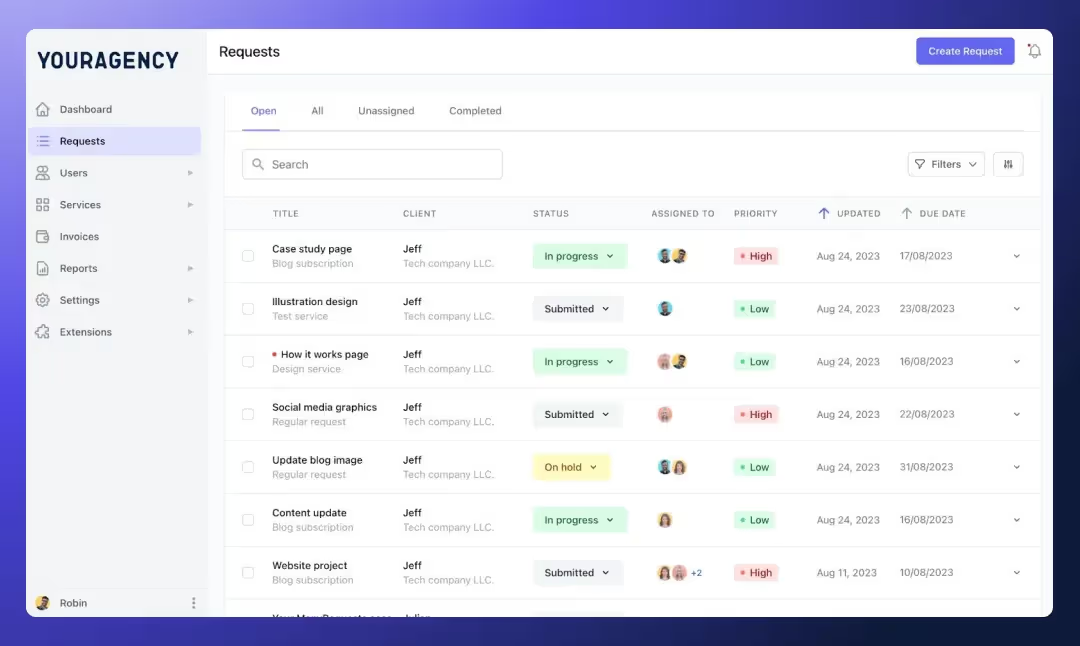
✅ ManyRequests is a top Wrike alternative for design and creative agencies looking for efficient client management–without the burden of fancy features they won’t need.
Here’s how ManyRequests excels in addressing each of the most common user complaints about Wrike:

While Wrike tends to overwhelm first-time users (especially those without prior experience in project management software), ManyRequests offers a more intuitive onboarding experience designed to get teams up and running quickly.

Wrike’s lack of clear graphical distinctions between tasks and projects often causes chaos, especially when managing multiple workflows simultaneously. ManyRequests counters this with a clean, well-organized user interface that simplifies project management.
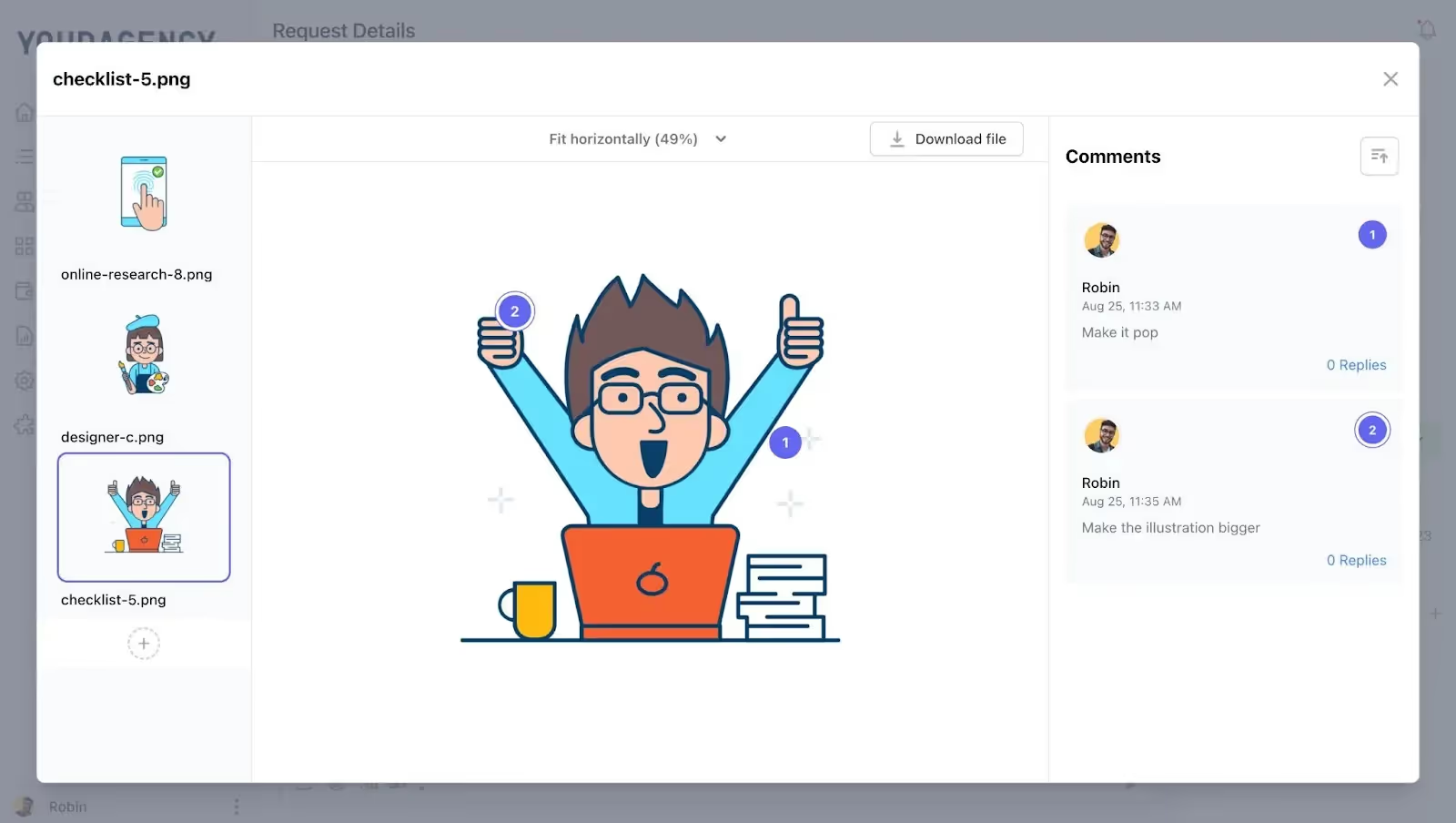
Slow response times can disrupt workflows and reduce productivity. ManyRequests tackles this issue head-on by providing faster, more streamlined project tracking and a seamless feedback loop that keeps work moving efficiently.
ManyRequests offers a range of pricing plans to accommodate different agency sizes and needs. Here’s a breakdown:
Free Trial: 14-day trial (no credit card needed)
Starter: Includes two admin users, basic features, and a custom domain for branded client portals.
Core: Offers all the Starter plan features plus time tracking, design annotations, and Zapier integration.
Pro: Includes Core features plus enhanced white-label customization and email features for a fully branded client experience.
Enterprise: Designed for large agencies (25+ team members) and offers API access, priority support, and a dedicated account manager. Contact sales for pricing
In addition, for every plan, you can serve unlimited clients, and if your team grows, you can add extra seats at $40/month per additional member. The 14-day free trial allows you to explore ManyRequests’ capabilities before committing to a plan.
Discover how ManyRequests can help you run your agency more smoothly while providing clients with a great user experience. Get started with a free trial today and see how it works.
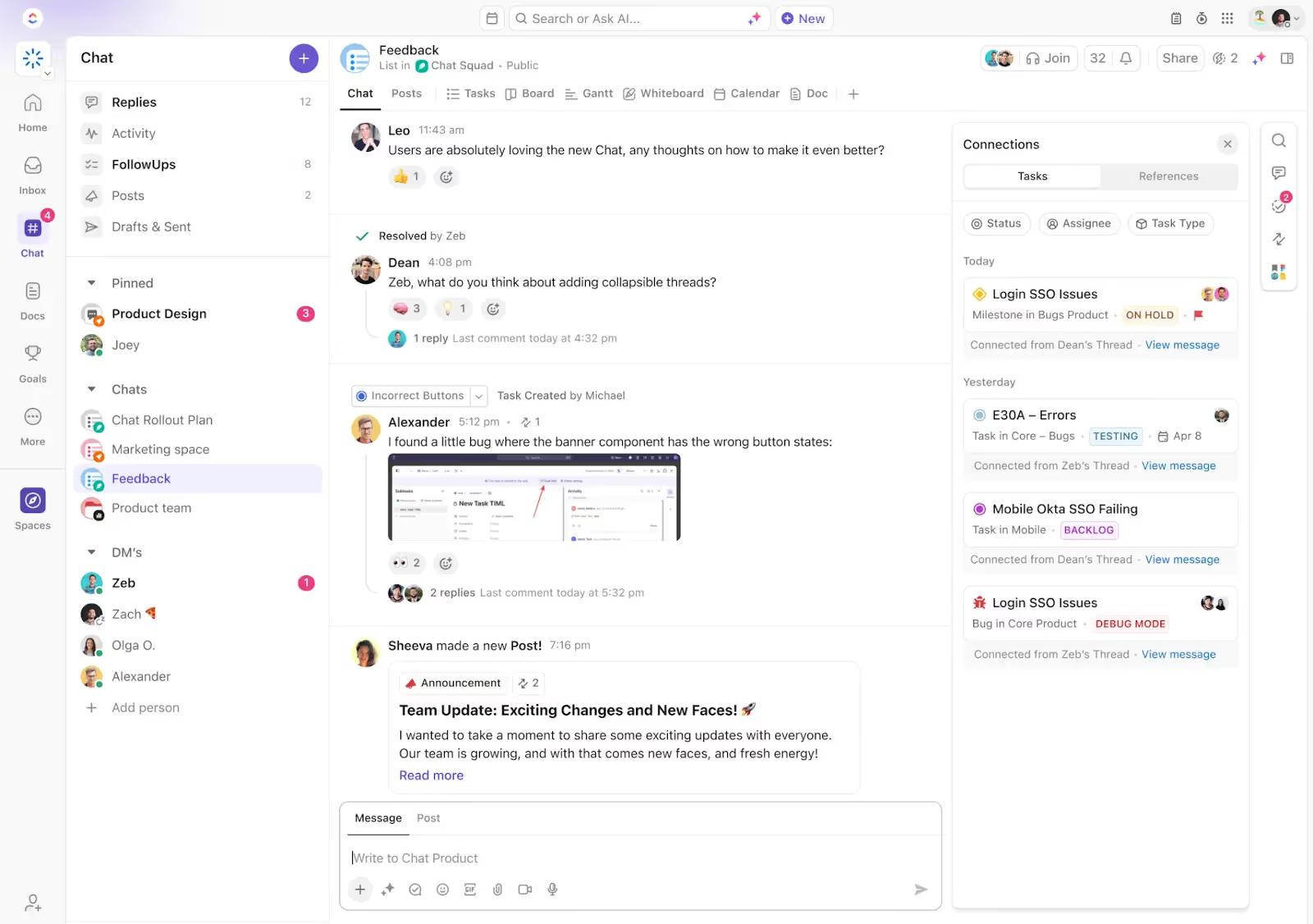
✅ Best for: Teams needing extensive customization and integration options.
ClickUp is a powerful project management platform known for its deep customization and flexibility. With views like List, Kanban, and Gantt charts, it helps teams tailor workflows to their needs while also offering strong task automation and time tracking. Compared to Wrike, ClickUp’s interface is more intuitive but still feature-packed, making it ideal for those who need a comprehensive tool without the clutter.
ClickUp Pros:
ClickUp Cons:
ClickUp Pricing:

✅ Best for: Teams needing a simple, collaborative project management tool.
Hive is a user-friendly platform that excels in real-time collaboration and task management. With multiple view options like Gantt charts and Kanban boards, Hive offers flexibility while keeping project management simple. Hive is easier to adopt for teams looking to avoid Wrike’s steep learning curve and cluttered interface, making it a good fit for smaller teams or those prioritizing ease of use.
Hive Pros:
Hive Cons:
Hive Pricing:
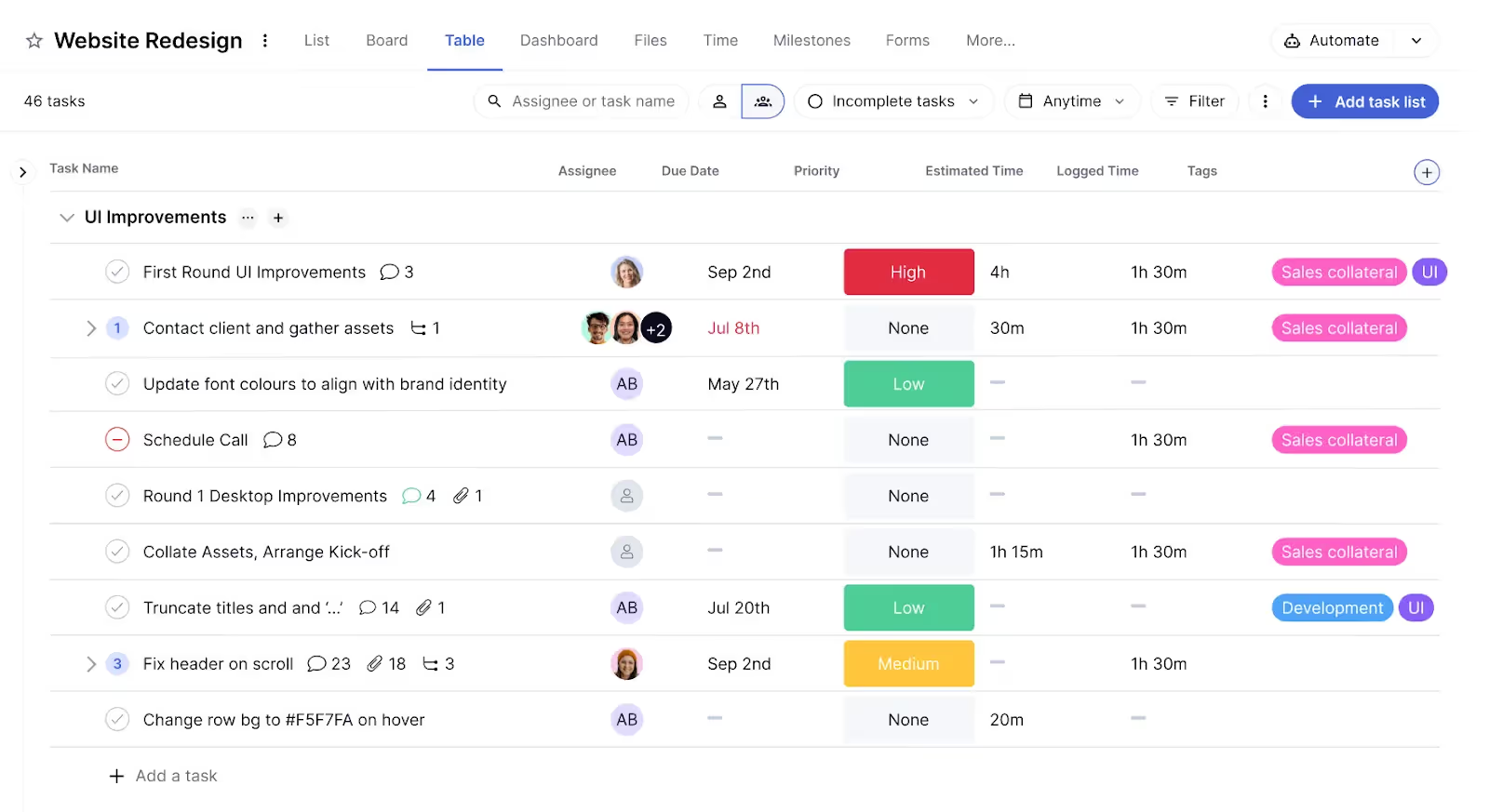
✅ Best for: Agencies requiring advanced project management with time tracking.
Teamwork is a project management tool tailored for client-facing teams, offering robust features like built-in time tracking and client collaboration portals. It simplifies managing complex workflows while maintaining transparency with clients through secure portals. The platform also supports advanced task management tools like dependencies and project templates.
Teamwork Pros:
Teamwork Cons:
Teamwork Pricing:

✅ Best for: Teams seeking visual project management with easy collaboration tools.
Monday.com is a highly visual project management tool, offering multiple views like Kanban, Gantt charts, and calendars, making it easy for teams to manage projects from different perspectives. Its user-friendly interface and drag-and-drop functionality make task management simple for teams of all sizes.
Compared to Wrike, Monday.com is easier to navigate, especially for teams looking for a more streamlined project management experience without an overwhelming array of features.
The platform excels in fostering team collaboration with integrated communication tools like comments, mentions, and file sharing, ensuring that everyone stays aligned on tasks and timelines.
ClickUp Vs. Monday: Which is Best For Your Agency?
Monday.com Pros:
Monday.com Cons:
Monday.com Pricing:
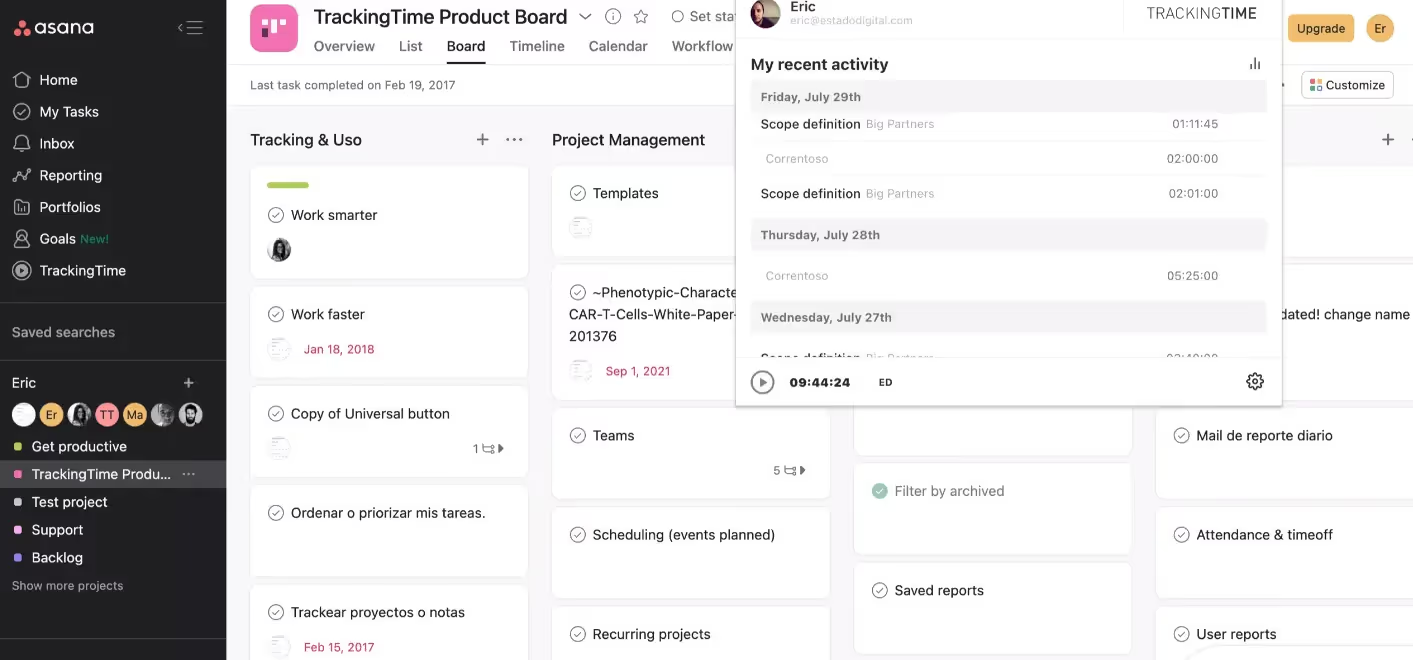
✅ Best for: Teams needing simplified project management with strong collaboration features.
Asana is a widely used project management tool that simplifies task management through its clean and intuitive interface. It supports multiple project views such as List, Kanban, and Timeline, allowing teams to customize how they visualize and manage work.
Asana is known for being very easy to adopt, even for teams without prior project management experience, and provides seamless collaboration features. Team members can communicate, assign tasks, and track progress all in one place.
Asana’s real strength lies in its task management and team collaboration tools, which ensure that all team members are aligned on goals and tasks, making it an excellent choice for organizations seeking an uncomplicated but effective project management solution.
Asana Pros:
Asana Cons:
Asana Pricing:

✅ Best for: Teams managing large, data-heavy projects with advanced tracking and automation needs.
Smartsheet is a project management tool built for managing complex, large-scale projects, especially those involving heavy data input and detailed tracking. Its spreadsheet-like interface makes it familiar for teams already using tools like Excel while providing enhanced collaboration, automation, and reporting features.
Compared to Wrike, Smartsheet offers more advanced automation and workflow customization, which can be particularly useful for enterprise-level projects that require sophisticated tracking and reporting capabilities.
Smartsheet Pros:
Smartsheet Cons:
Smartsheet Pricing:

✅ Best for: Small teams or startups seeking a simple, no-frills project management solution.
Basecamp is known for its minimalist approach to project management, offering a streamlined interface that's easy to navigate. It focuses on collaboration by organizing tasks, discussions, and documents in a clear, simple format. Unlike Wrike, Basecamp avoids complexity by sticking to core features that make communication and task management straightforward for small teams or startups.
Basecamp Pros:
Basecamp Cons:
Basecamp Pricing:
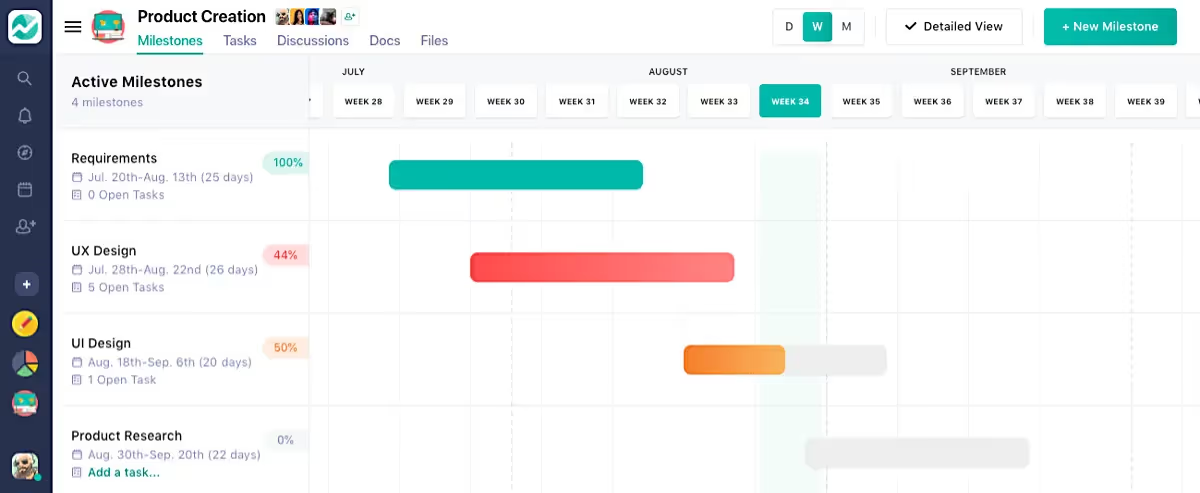
✅ Best for: Teams seeking an all-in-one project management solution with built-in collaboration tools.
Nifty is a project management tool that combines task management, team collaboration, and project tracking in one place. It offers various views, including Kanban boards, Gantt charts, and calendars, making it easy to manage workflows.
Nifty’s key strength lies in its team collaboration tools and integrated milestone tracking, allowing teams to set goals and manage tasks without hopping between different platforms.
Compared to Wrike, Nifty focuses on simplifying project management with a more streamlined and user-friendly interface, making it ideal for teams looking for an all-in-one solution without the steep learning curve.
Nifty Pros:
Nifty Cons:
Nifty Pricing:

✅ Best for: Teams looking for a complete business management solution with advanced financial features.
Scoro is a comprehensive work management platform designed to combine project management with financial management and business analytics. It offers powerful tools for budgeting, invoicing, and reporting, making it ideal for businesses looking for an all-in-one solution.
Compared to Wrike, Scoro is tailored for businesses that require deeper insights into financials alongside project tracking, offering more advanced billing and reporting tools.
Scoro Pros:
Scoro Cons:
Scoro Pricing:

✅ Best for: Small teams or individuals seeking a simple, visual task management tool.
Trello is a highly visual project management tool that uses Kanban boards to help users organize tasks and workflows. Known for its ease of use, Trello is perfect for teams looking for a straightforward, drag-and-drop interface to manage tasks and projects. Unlike Wrike, Trello emphasizes simplicity over advanced features, making it ideal for teams or individuals who don’t require complex project tracking or automation.
Trello Pros:
Trello Cons:
Trello Pricing:

✅ Best for: Large organizations managing complex projects with detailed timelines and resource allocation.
Microsoft Project is a powerful project management tool designed for large-scale projects that require intricate scheduling, resource management, and budget tracking. It offers advanced Gantt charts, resource allocation tools, and timeline views, making it ideal for teams with complex, multi-faceted projects.
Compared to Wrike, Microsoft Project offers more depth in resource management and scheduling, but it can have a steeper learning curve for new users.
Microsoft Project Pros:
Microsoft Project Cons:
Microsoft Project Pricing:

✅ Best for: Teams needing an affordable project management tool with built-in automation and collaboration features.
Zoho Projects is an affordable project management tool that offers a range of features such as task automation, time tracking, and Gantt charts, making it ideal for teams on a budget. It excels in integrating project management with collaboration, allowing team members to communicate directly within the platform. Compared to Wrike, Zoho Projects is easier to set up and more cost-effective, especially for small to mid-sized teams.
Zoho Project Pros:
Zoho Project Cons:
Zoho Project Pricing:

✅ Best for: Enterprise teams requiring advanced project portfolio management and resource tracking.
Planview AdaptiveWork (formerly Clarizen) is a robust project portfolio management tool, best suited for enterprise teams managing complex projects. It provides in-depth resource management and portfolio analysis to help teams track project progress and allocate resources efficiently. Compared to Wrike, it offers a more comprehensive set of tools for project oversight, financials, and risk management, making it ideal for larger organizations handling multiple project portfolios.
Planview AdaptiveWork Pros:
Planview AdaptiveWork Cons:
Planview AdaptiveWork Pricing:

✅ Best for: Large organizations focused on value stream management and portfolio oversight.
Clarity, developed by Broadcom, is an enterprise-grade project and portfolio management solution designed to provide deep insights into resource allocation, financials, and portfolio performance. It is particularly suited for teams handling large-scale projects requiring value stream management and advanced tracking.
Compared to Wrike, Clarity offers more extensive features for managing project timelines, resource utilization, and budgeting, making it ideal for enterprises with complex project requirements.
Clarity Pros:
Clarity Cons:
Clarity Pricing:
If Wrike’s steep learning curve, cluttered interface, or performance issues are holding your team back, exploring other tools might be the solution.
For large enterprises managing complex portfolios, Microsoft Project offers powerful project tracking and resource management. If your team prefers a more visual and intuitive approach, Trello provides simplicity and ease of use.
However, for creative agencies needing a customizable and client-focused platform, ManyRequests is the top choice. With seamless onboarding and personalized portals, ManyRequests is built to handle an agency’s unique needs without the bells and whistles that can only weigh its operations down.
Try ManyRequests free today and see how it can improve your agency’s workflow.